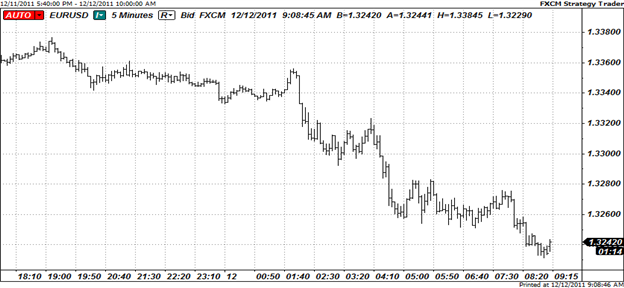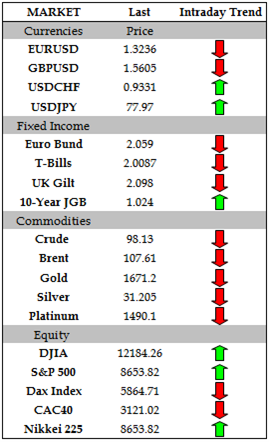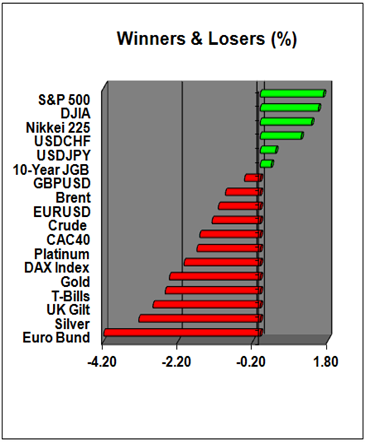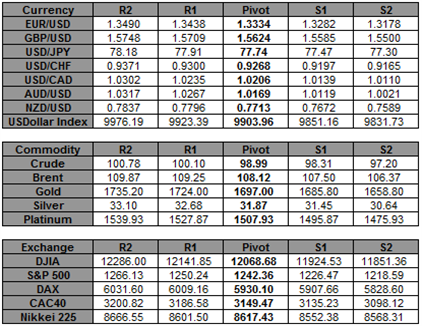Fundamental Headlines
• Italy Sales €7 Billion in Bills as Costs Decline – Bloomberg
• U.S. Growth is No Deterrent for Rally in Treasuries – Bloomberg
• Greece Opens Bailout, Debt Swap Talks – Reuters
• Cameron’s Treaty Opt-Out May Prove Problematic – WSJ
• Banks Sit in a Tangled Web – WSJ
European Session Summary
The week opened softer on Monday with futures pointing towards a lower open by U.S. equity markets. Although Asian equity markets posted gains, European indices shrugged off any progress made by European leaders at the end of last week, leading the majors lower against the U.S. Dollar. An Italian debt auction did little to inspire confidence, with the 10-year bonds pushed back above the 6.500 percent threshold; at the time this report was written, the 10-year bonds were yielding 6.727 percent.
The slide comes after another credit rating agency announced it will review ratings for all countries in Europe. The announcement by Moody’s Investors Service’s is hardly a surprise, but with Standard & Poor’s already breathing down the markets’ ‘neck,’ participants were understandably uneasy entering a new trading week. Moody’s said that last week’s Euro-zone summit offered few new measures and didn’t diminish the risk of credit-rating changes. Elsewhere, Citigroup added that the United Kingdom could be facing a credit downgrade and lose its hallowed ‘AAA’ rating if recent fiscal consolidation measures fail.
EUR/USD 5-minute Chart: December 12, 2011

Charts created using Strategy Trader– Prepared by Christopher Vecchio
As such, the EUR/USD has traded lower for the majority of the trading day, hitting a session low of 1.3230 ahead of the start of trading in New York. The pair is currently trading at its lowest level since November 28, when the market gapped open higher ahead of the central bank intervention on November 30. Similar price action was exhibited across the majors, with Dollar-demand, a sign of liquidity concerns, evident across the board; even the USD/JPY was higher, a sign that today’s shift isn’t just a move to risk-aversion.
If the Euro-zone remains under pressure, so too will the EUR/CHF. If the European Central Bank steps into the market and begins to aggressively buy Euro-zone bonds, the effect on the Euro will be similar to the effect the Federal Reserve’s quantitative easing program had on the U.S. Dollar: depreciation of the underlying currency (in this case, the Euro). Thus, downside pressure is expected on the EUR/CHF, which could provoke the Swiss National Bank to raise its currency floor from 1.2000 to 1.2500 or even 1.3000 at its meeting on Thursday.
24-Hour Price Action


Key Levels: 14:05 GMT

Thus far, on Monday, the Dow Jones FXCM Dollar Index is mostly higher, trading at 9948.90, at the time this report was written, after opening at 9895.63. The index has traded mostly higher, with the high at 9956.77 and the low at 9884.54.
1 comment:
Very nice post.
Post a Comment